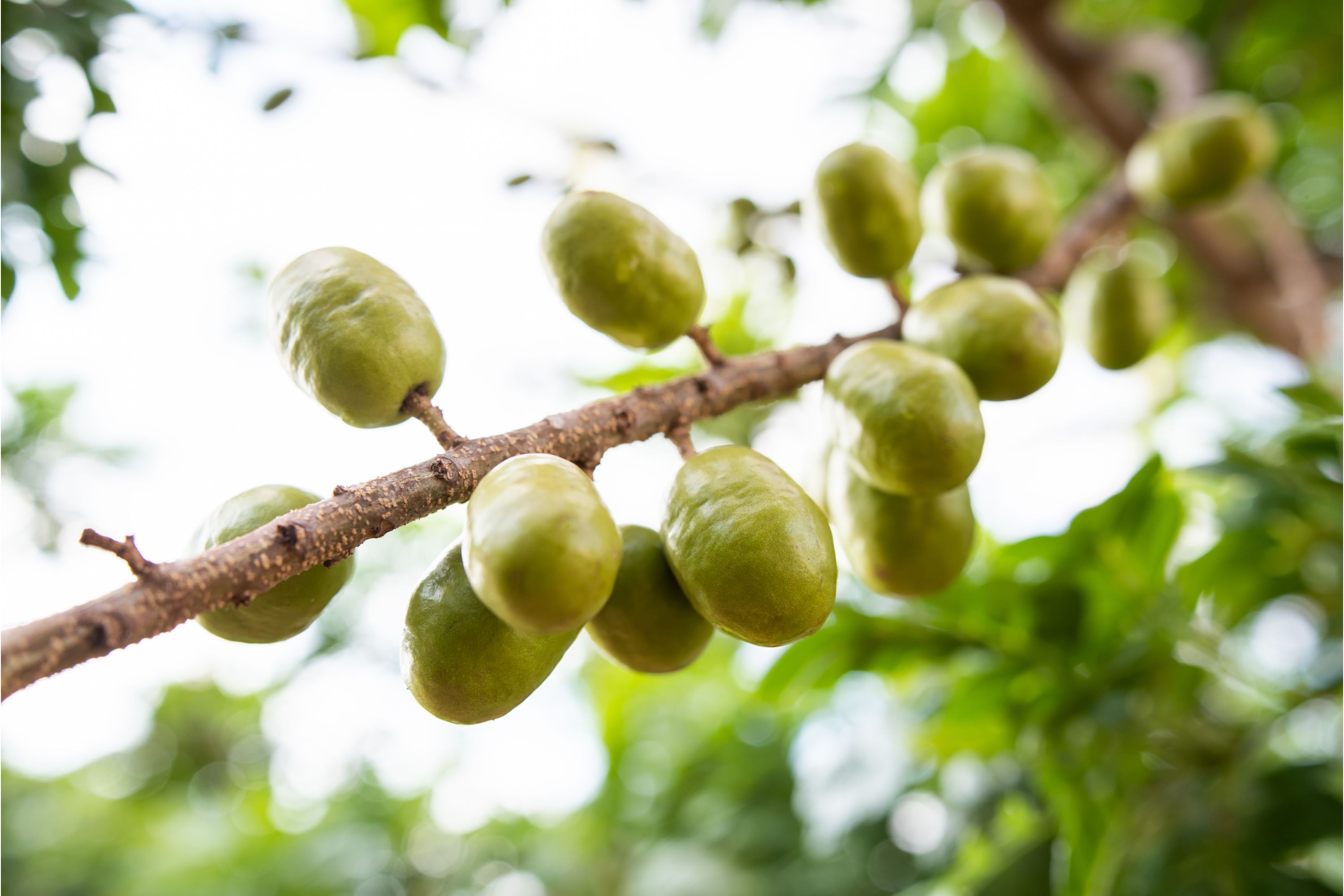Jocote
(Spondias purpurea)

Description
Spondias purpura is a species of flowering plant in the cashew family, Anacardiaceae, that is native to tropical regions of the Americas, from Mexico to Brazil. It is also very common in most of the Caribbean islands. It is commonly known as jocote, which derives from the Nahuatl word xocotl, meaning any kind of sour or acidic fruit. Other common names include red mombin, plum, purple mombin, hog plum, ciriguela, ceriguela, seriguela, siriguela (Brazil) ciruela huesito (Colombia), ciruela, ciruela traqueadora (Panama), ciriguela, cirigüela, cirguela, cirguelo (Ecuador), and siniguelas (Philippines). It is a popular fruit throughout Central America, particularly in El Salvador, Nicaragua, Honduras and in Costa Rica. S. purpurea fruit grow on deciduous trees in warm tropical climates. They begin to develop following tiny red flowers, before any leaves appear on the tree. S. purpurea fruit grows along thick, knobby branches in clusters or alone. They are about 2 and a half to 5 centimeters in diameter and are slightly elongated. Some have a knob on the end, or are oddly shaped. Young S. purpurea fruit are green or yellowish-green and ripen to a purple or red color; some variants of the species will ripen to a yellow color. The thin skin has a waxy appearance and is edible. The pulp is yellow when ripe and sweet. In the center of the fruit is a large pit, or stone, which is inedible. The flavor of a S. purpurea fruit is said to be similar to a plum, sweet with a bit of an acidic aftertaste. S. purpurea fruit is available in the fall and winter months. S. purpurea fruit are rich in vitamin C and carbohydrates. They are a source of calcium, phosphorus, iron and a small amount of fiber. They contain carotene, B-complex vitamins, and several important amino acids. S. purpurea are high in antioxidants, which help rid the body of free radicals. Urushiol is present in the sap of the tree and in small concentrations of the fruit peel; this can trigger contact dermatitis in sensitized individuals. This reaction is more likely to occur in people who have been exposed to other plants from the family Anacardiaceae, such as poison oak and poison ivy, which are widespread in the United States. In Florida growth is relegated to near-tropical areas of the state, and the tree is killed or greatly harmed by cold winter temperatures from Palm Beach County northward.
Taxonomic tree:







